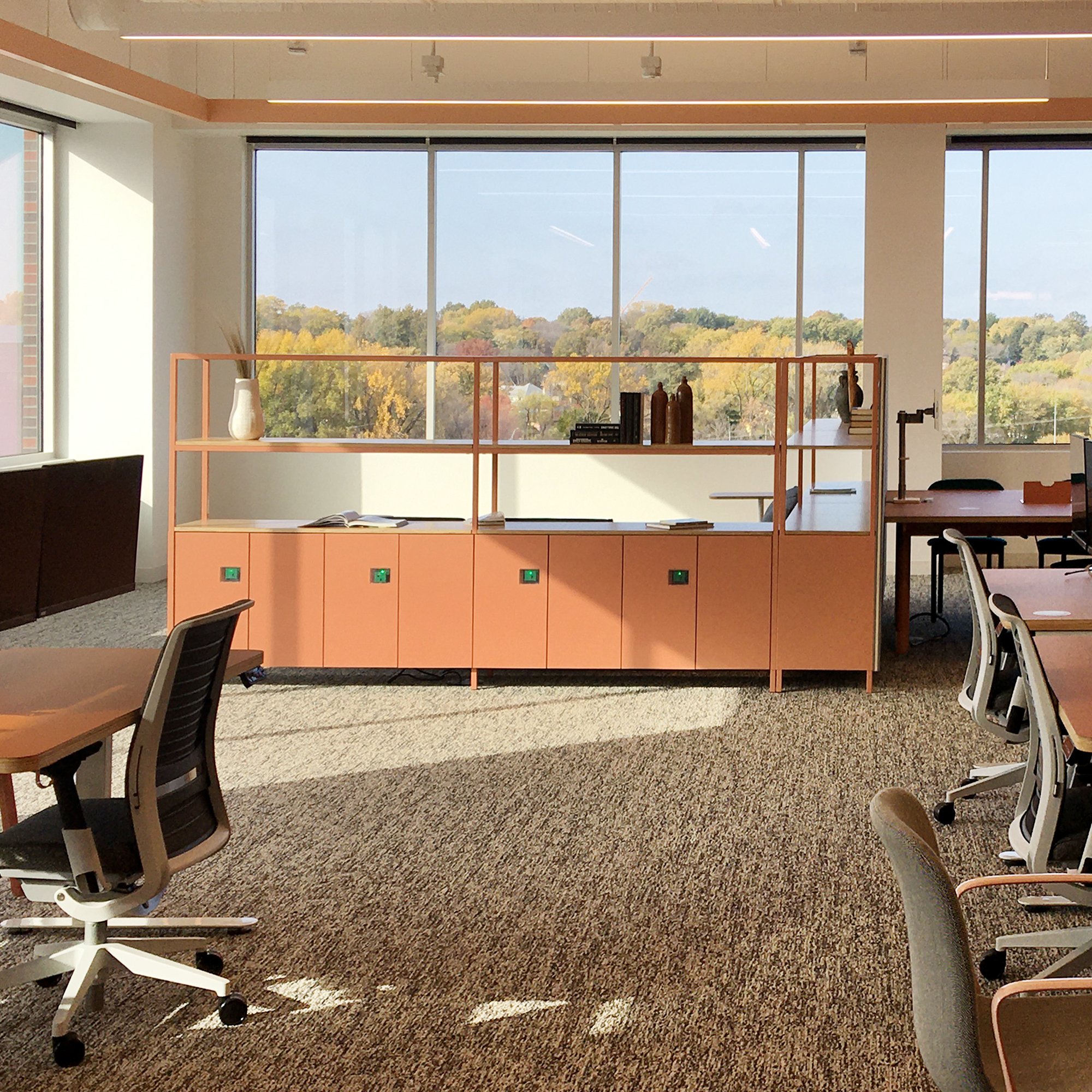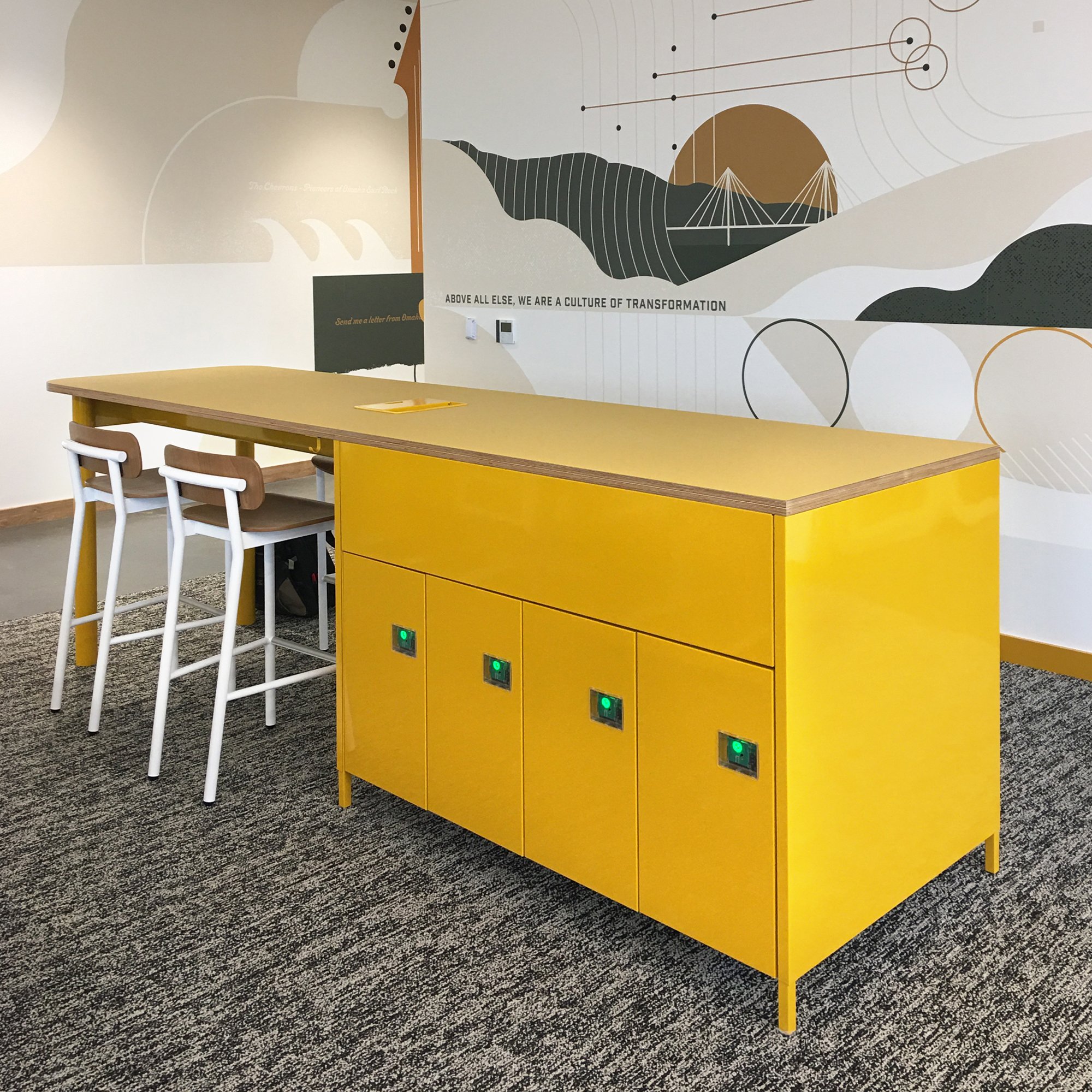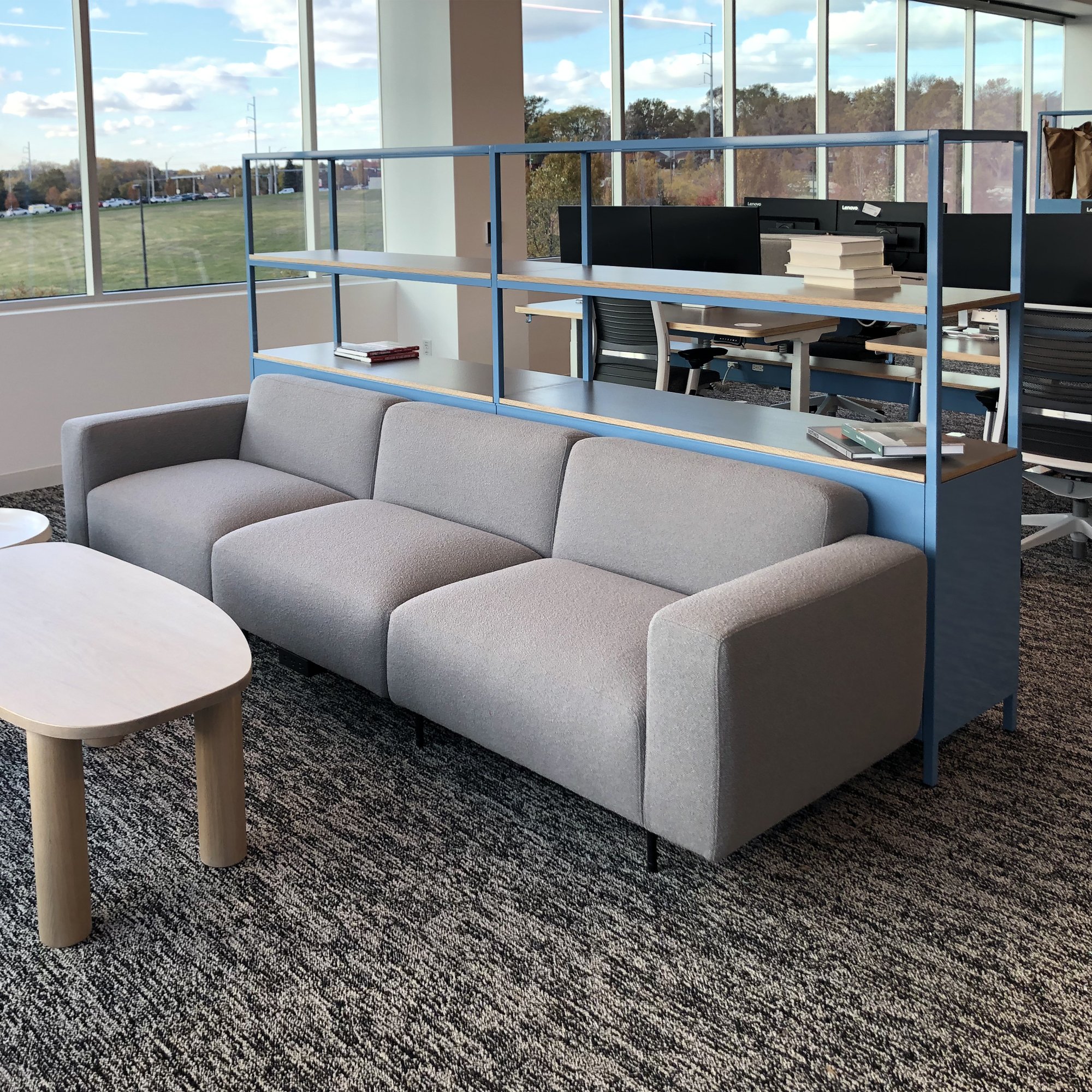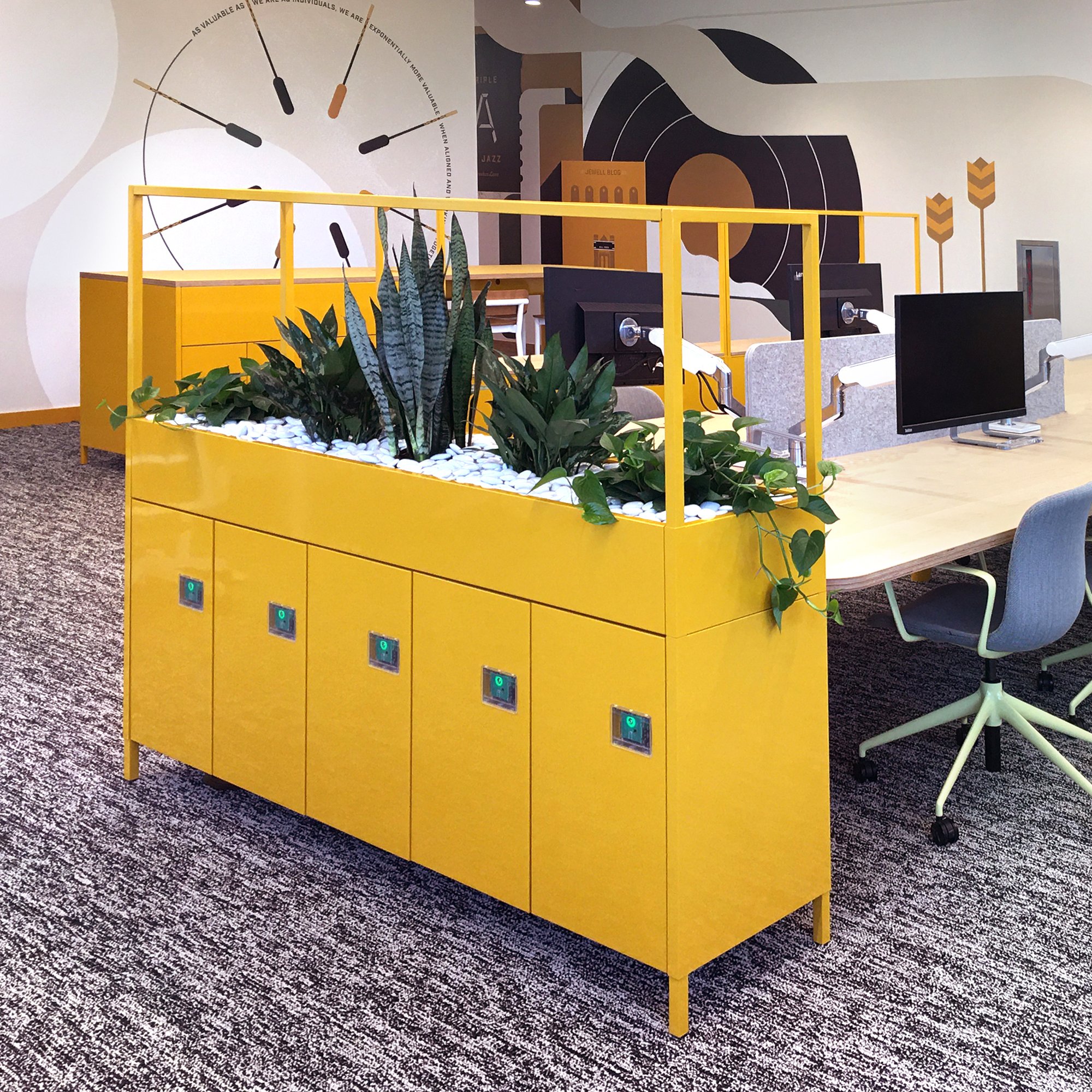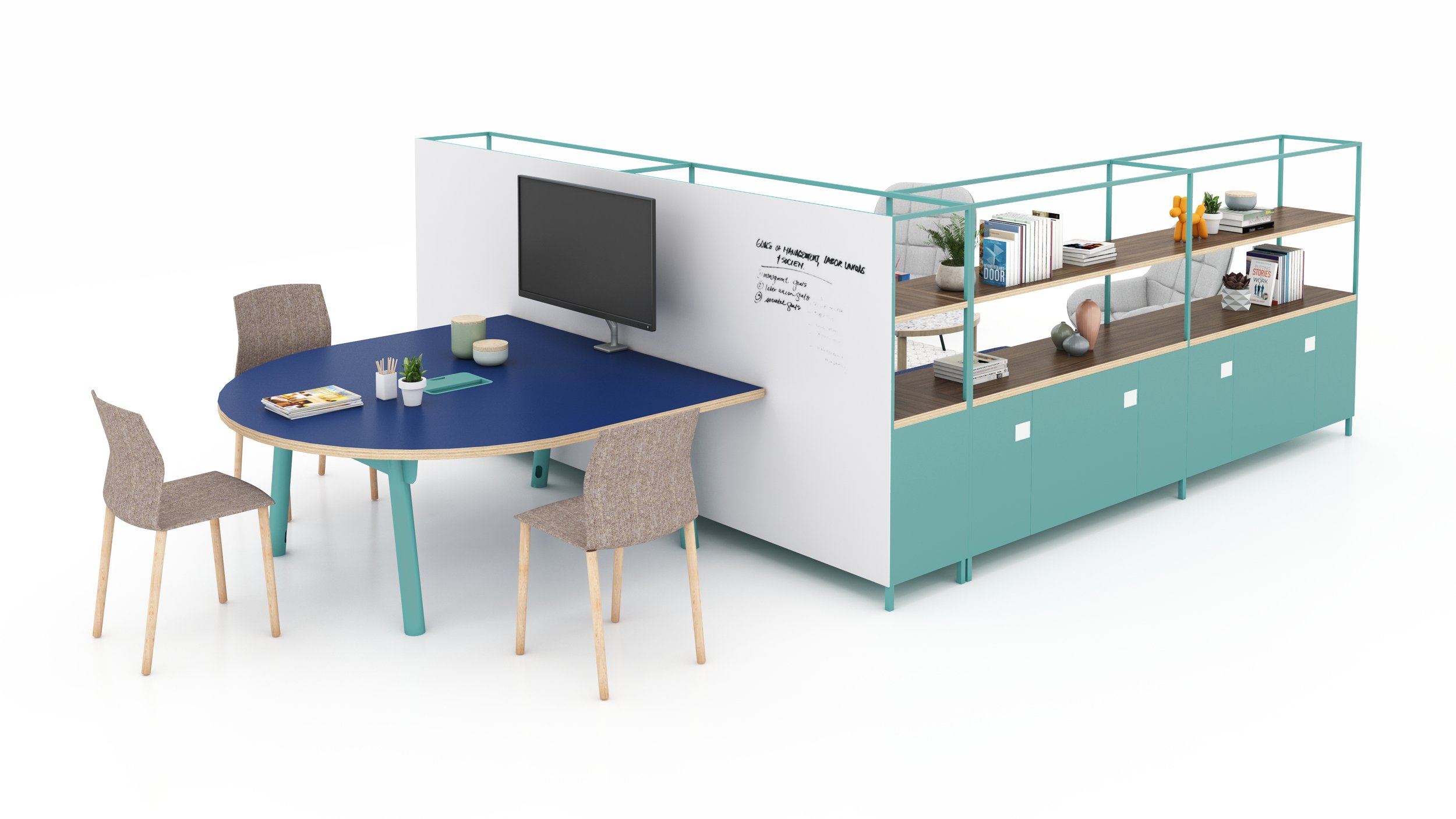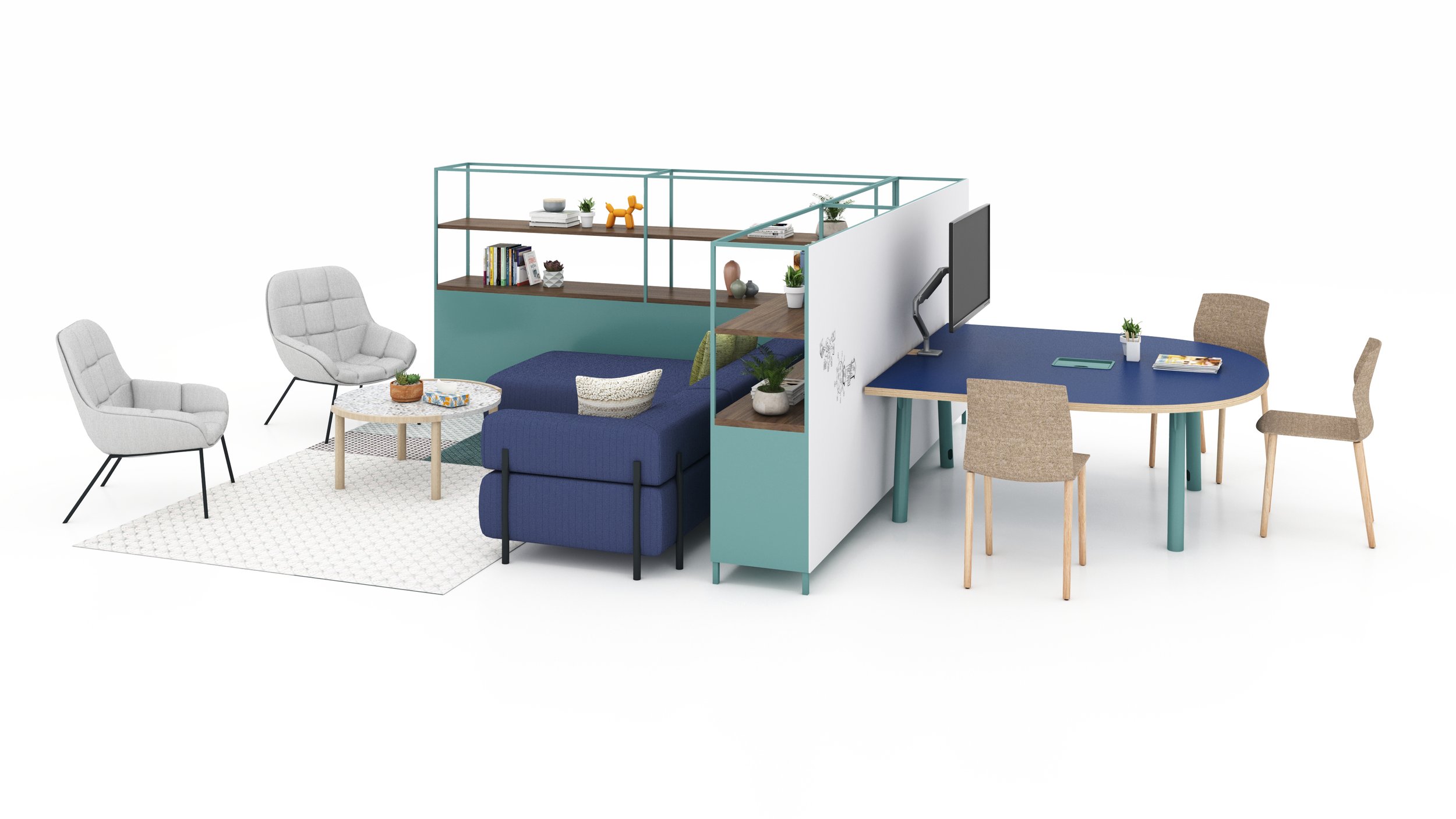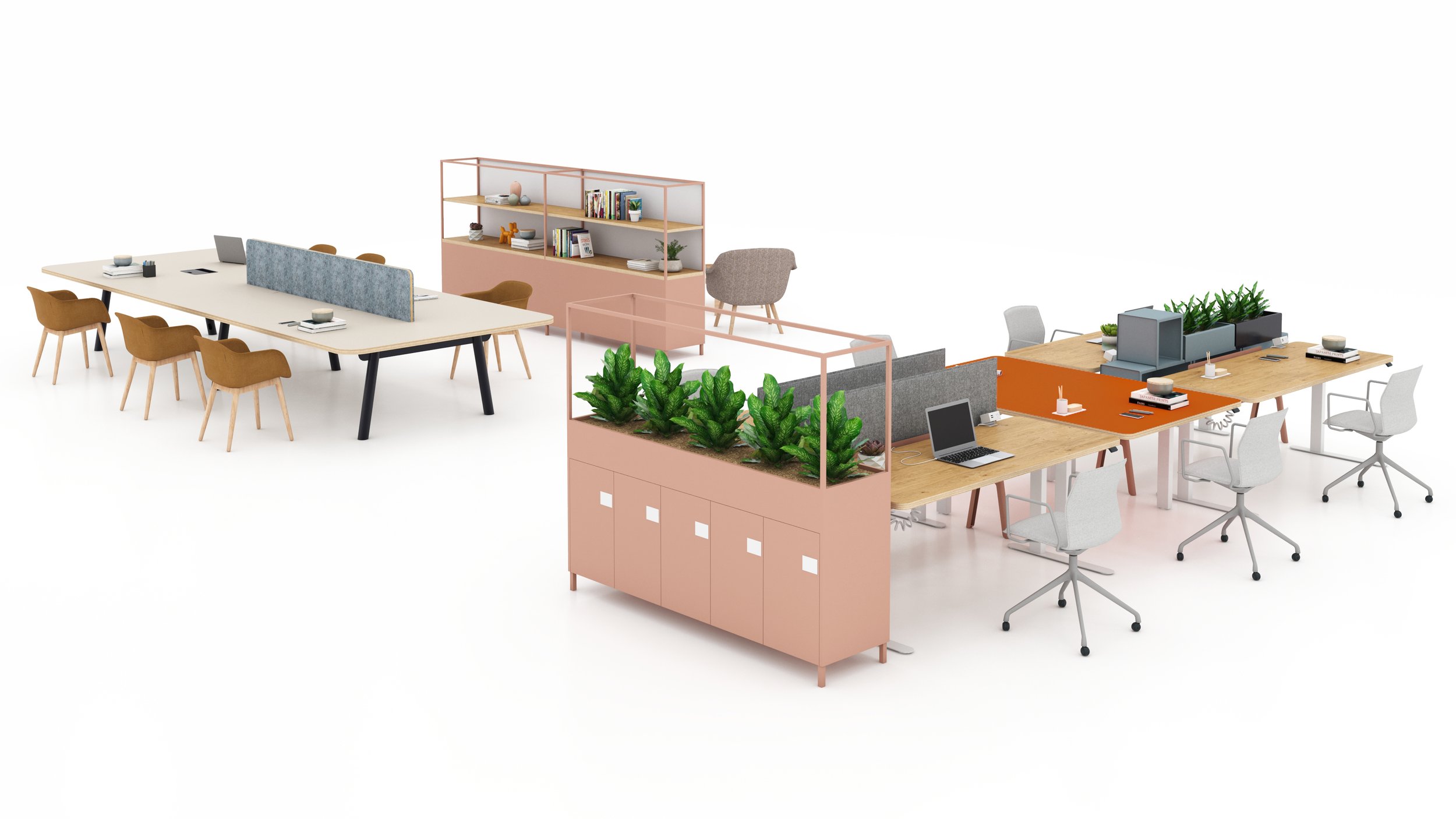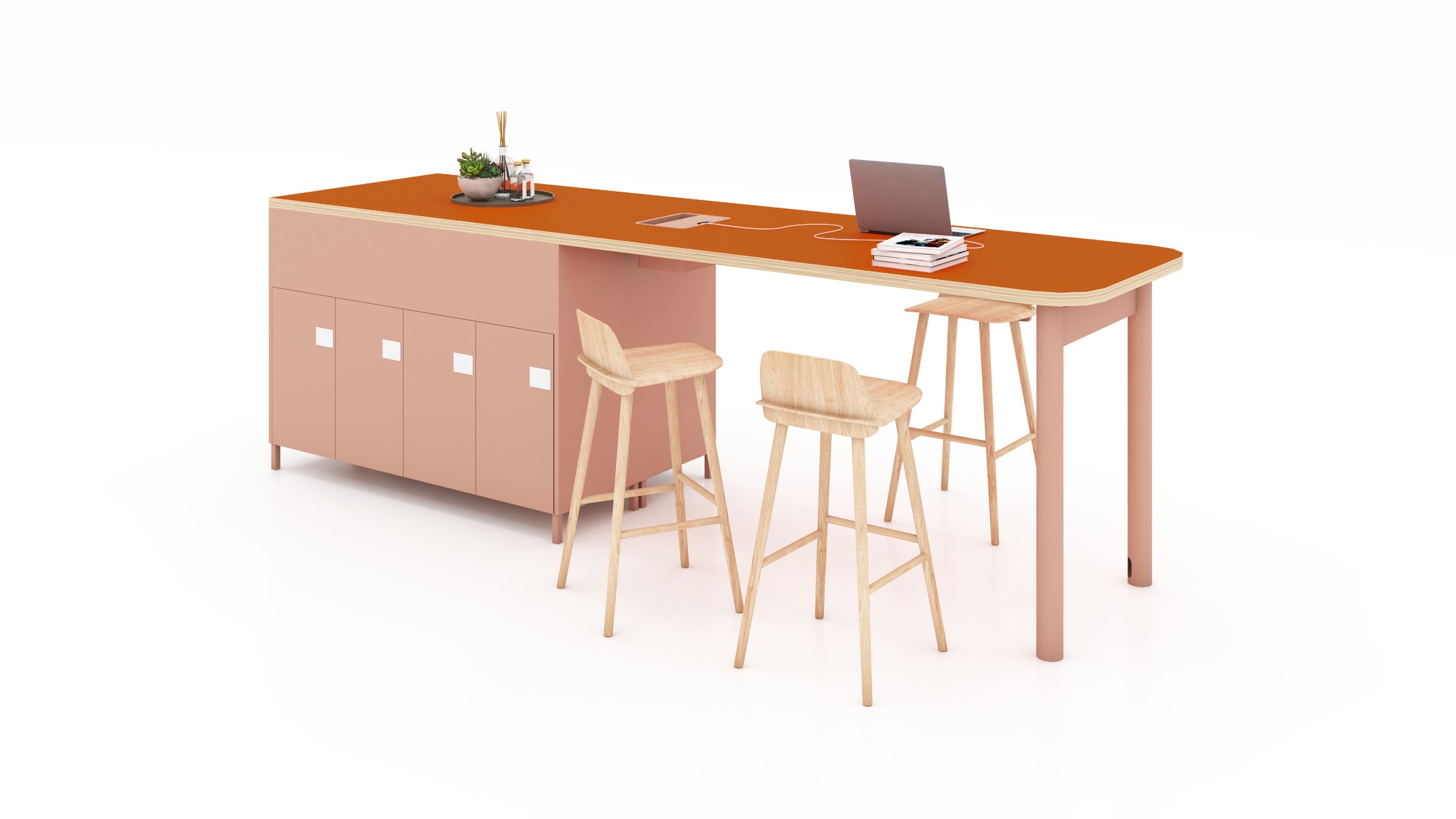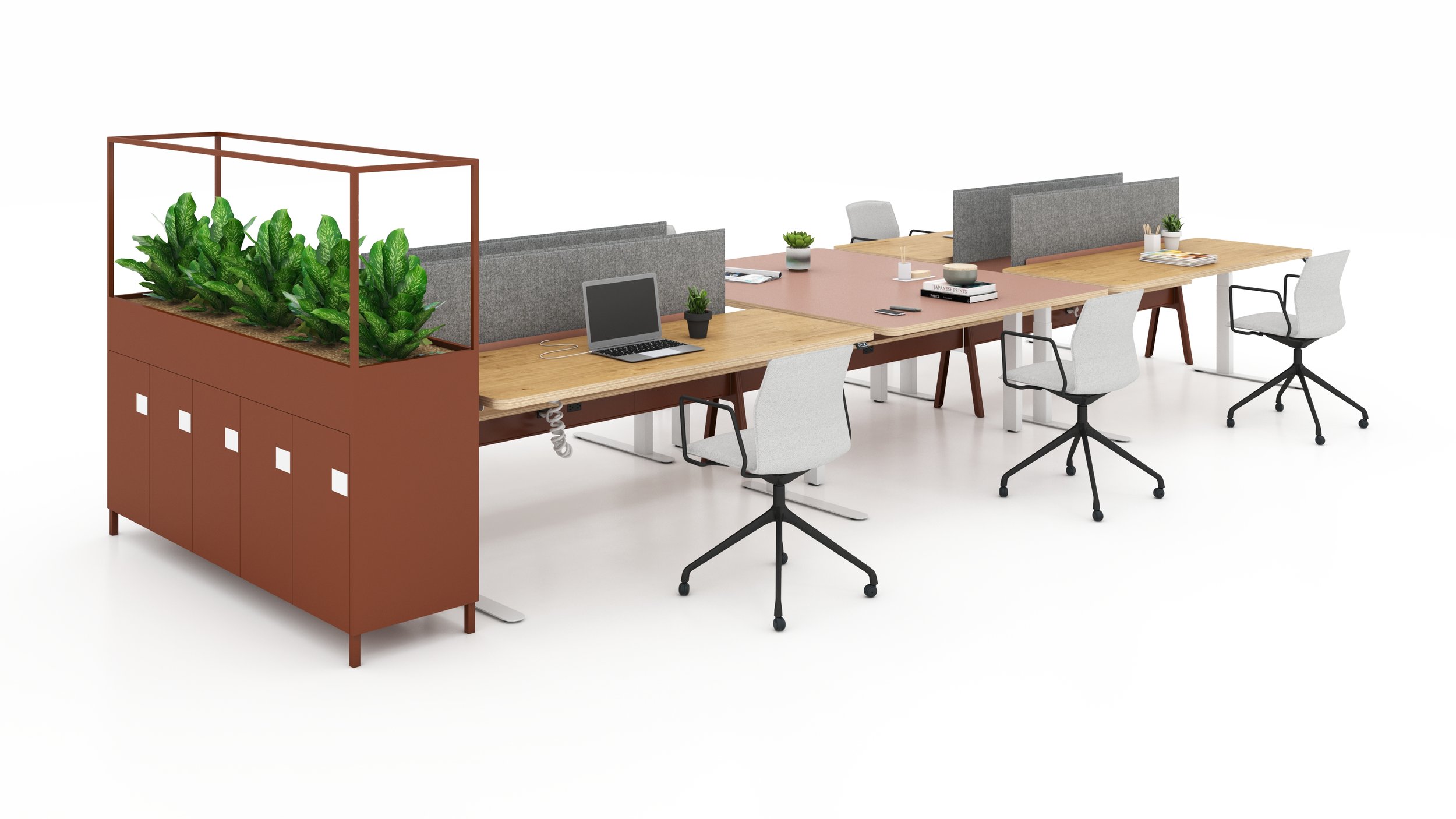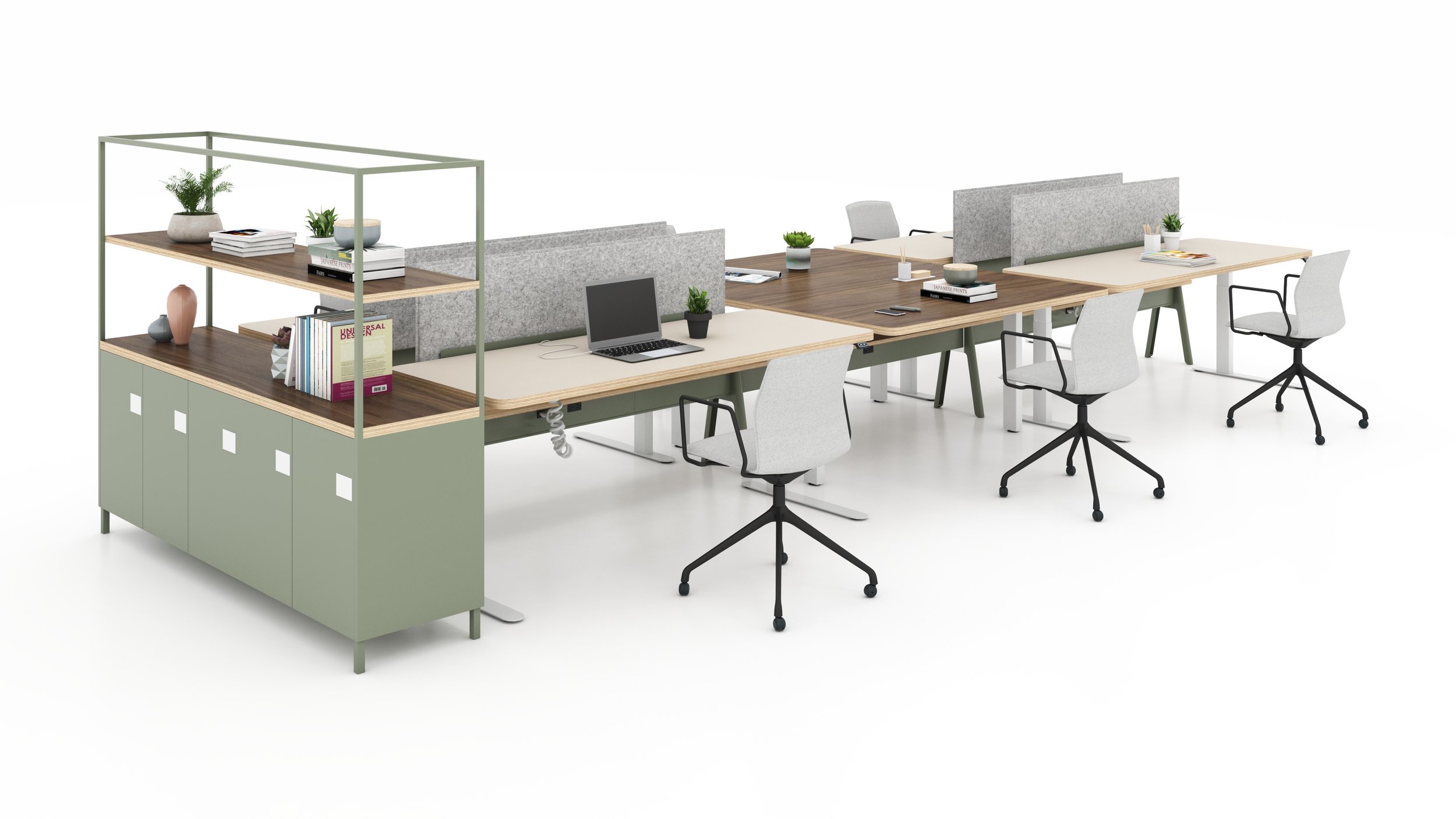< Go Back
April 03 2022
Pair’s new break-out locker system is the key to the future of work
by Hillary Kalamaha, Design & Application Manager & Elliot Whalen, Brand Ambassador, Product Development
Pair’s newest design—SOMA: a multi-use, scalable, power-enabled locker system—was the key to unlatching LinkedIn’s vision for a future-savvy space in Omaha, Nebraska.
SOMA sprang from a central question of the LinkedIn project: Where do different types of workers—full-time, hybrid, and temporary—put their stuff? At first glance, you might think: give full-time, on-site employees desks with built-in storage and allot hybrid staffers rotating desks and lockers. But this plan breaks down if the makeup of the workforce changes. What happens if full-timers wane and hybrid folks wax, or vice versa?
We ultimately cracked the code by creating a storage system that wasn’t married to individual workstations. SOMA would belong to no one and everyone. Whether moving between office floors, popping in from a home office for a meeting, or visiting from other cities, every worker could find an open desk and a place to stow their things.
At the same time, we said good riddance to the days of utilitarian gym-style lockers stashed in long hallways. Instead, we reimagined the locker as stylish furniture in its own right. In fact, to kill two birds—storage needs and limited square footage—with one proverbial stone, we designed lockers that integrate ingeniously with other furnishings, doubling as bases for meeting tables, shelving, and planters.
Read on to find out how we value-engineered an ultra-flexible storage-and-more solution that launched one Omaha workspace into the future.
A star is born (from a kit of parts)
We wanted a rock-star caliber storage system, but we needed it to be manufacturable at scale, without breaking the bank. We set out on a tour of possibilities, determined to find the best performer for the most reasonable price.
Heavy metal, high maintenance
First, we auditioned the idea of all-metal locker units designed in different shapes and sizes. However, the 3-D modeling required for this kind of custom metalwork eats up time—and time is money. Given the large number of units needed for LinkedIn’s project, we concluded that this metal-heavy concept wouldn’t be expedient or cost-effective.Solo acts, big ticket price
Next, we designed each storage cubby to be its own stand-alone unit. Stacking them together would make it easy to ramp up storage. But in this model, cubbies didn’t share side walls, meaning each unit requires more material and costs shoot up.Supergroup, the show stealer
In the end, we arrived at an adaptable kit of parts. Each individual locker features the same type of door and the same interior cubby outfitted with a fixed shelf and metal bag hook. The standard construction allows units to be easily added or removed while keeping material costs down.
Design mixology: an artful blend of ingredients
If you think of a new product as the next great artisanal cocktail and Pair as a master mixologist, inventiveness depends on blending the right ingredients. For our storage-minded elixir, we designed the inner cubbies to be made from millwork and then clad the cubbies in sheet metal.
As LinkedIn was on a tight timeline, we introduced millwork as a core material because it’s faster to work and more economical than metalwork, without compromising on quality. Fabricating the core with millwork allowed us to jumpstart production, make modifications quickly and not stress the budget.
Ultimately, our mill- and-metalwork hybrid with standard features served up a satisfying solution that allowed the locker system to be easily manufactured and assembled.
After making and installing dozens of locker units for LinkedIn, we’re confident that SOMA’s mixed-media system is time and cost-effective for a wide range of projects. This tastefully concocted product is going straight to our regular menu.
After making and installing dozens of locker units for LinkedIn, we’re confident that our mixed-media system is time and cost-effective for a wide range of projects. In particular, we see this mill- and metalwork locker system as the perfect solution for all medium-sized projects.
When lockers work overtime
Efficient storage wasn’t enough of a success for our over-achieving locker system. We worked to meet another challenge: to optimize tight square footage. At LinkedIn’s Omaha outpost, a single office floor required some hundred individual lockers. That’s A LOT of lockers to fit into an office that’s also packed with workstations and other furniture. To maximize space, we adapted the lockers to work double-time as bases for: 1) shelving units; 2) collaborative meeting tables; 3) planters; or 4) whiteboards.
Integrated with furniture pieces, this multipurpose locker serves two of the most urgent demands for today’s offices: collaborative meeting spaces and plants. Used as bases for tables and as hanging brackets for whiteboards, SOMA supports meetings and collaborative working. With rectangular planters on top, the lockers can also bookend workstations with local foliage, threading greenery through the space.
Lock it up and throw away the key
Even as we beefed up the lockers’ multifunctionality, we also reimagined its central raison d’être: safeguarding stuff. We brought in a locking system from Gantner that syncs with existing security protocols and frees up a fluid, tech-savvy workforce.
We designed each locker door to be secured with an electronic key-card system, powered by a computer slipped into the back of each unit. Once a key card is held up to the front of the lock, the door automatically kicks out. This locker key-card system is the same key-card system used for office entry by LinkedIn employees across the country. So, a LinkedIn worker based in San Francisco can jet to Omaha for meetings and use their home office key card to enter the Omaha office, as well as unlock any empty locker at their destination.
No more juggling multiple keys or dealing with forgotten locker combinations!
Developing the key-card system came with an added bonus—since each individual cubby needed power for the electronic locks, we are now also able to easily integrate power and/or USB charging capabilities into each cubby.
It’s a locker glow up
In signature Pair style, SOMA pumps up the volume on aesthetics as well as functionality. We designed the locker cases’ metal cladding to be powder-coated in virtually any color. For LinkedIn, the colors riff off the bold interior design vision with energizing shades of bright yellow, deep blue, and blush. The saturated colors show off the lockers’ sleek, modern lines, map subsections into the open layout, and infuse the whole workspace with a warm vibe.
On the final walkthrough, the LinkedIn team members were totally blown away by their new dynamic home for work. As for us, Pair is proud to be co-creators of this exuberant space that is—both practically and aesthetically—a knockout.
Locking in the future of work
Looking back on the design journey of SOMA, it’s a rush to see the future zooming into focus. Through our work for LinkedIn Omaha, we produced another ultra-flexible Pair design that updates today’s office for tomorrow’s workers.
Adaptive and multifunctional, SOMA solves storage needs for an evolving workforce and pitches in to help with other modern challenges. By integrating collaborative tables, planters, custom color, and power sources directly into the design, SOMA makes great use of tight spaces and is oh-so-stylish.
With its scalable design composed of optimized materials, SOMA is also quick and economical to produce—letting companies act fast to futureproof their offices and their bank accounts. So spread the word to all time travelers: SOMA is here and ready for takeoff.
—Hillary & Elliot




